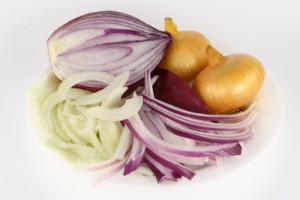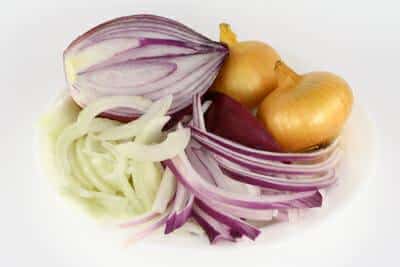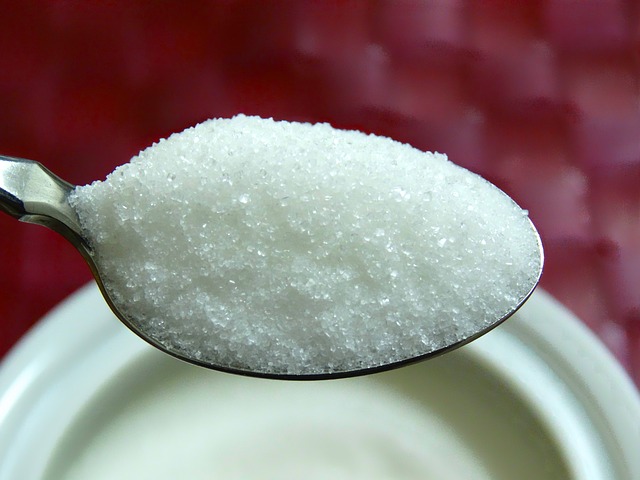 Onions, a member of the allium family, are related to leeks shallots, garlic and scallions. Smelly though they are, they have been used for centuries for their remarkable healing properties. Asian cultures, Egyptians, Romans, and ancient Greeks revered onions. They believed these globes helped to fight infection, relieved indigestion, eased joint discomfort and many other ailments. From modern studies we know that onions have antibiotic and anti-inflammatory properties. It has also been found useful as a diuretic and as an effective expectorant (this would make it helpful for fighting coughs, colds and flu bugs).
Onions, a member of the allium family, are related to leeks shallots, garlic and scallions. Smelly though they are, they have been used for centuries for their remarkable healing properties. Asian cultures, Egyptians, Romans, and ancient Greeks revered onions. They believed these globes helped to fight infection, relieved indigestion, eased joint discomfort and many other ailments. From modern studies we know that onions have antibiotic and anti-inflammatory properties. It has also been found useful as a diuretic and as an effective expectorant (this would make it helpful for fighting coughs, colds and flu bugs).
Onions, like other members of the allium family, are high in flavonoids and powerful antioxidants known to prevent many diseases in the body. They are particularly high in the flavonoid quercetin, which in recent studies has been shown to prevent heart disease by keeping cholesterol from attaching to the walls of our arteries and also preventing the sticking together of blood platelets and the formation of clots. A 2006 British study shows that people who eat the most quercetin-rich foods (particularly onion soup in this study) have reduced their risk of thrombosis and cardiovascular disease. Quercetin has also been used to stop tumors from growing and is often used for cancer prevention. In central Georgia, where Vidalia onions are grown, statistics show that deaths from stomach cancer is almost 50% lower than in the rest of the United States. Onions are also very rich in fructo-oligosaccharides, compounds that have been shown to stimulate growth of healthy bifidobacteria and suppress the growth of potentially harmful bacteria in the colon. This may account in part for onion’s role in preventing colon cancer.
According to the American Heart Association, onions are a natural and effective way to raise one’s HDL (good) cholesterol. Researchers have shown that by eating white or yellow onions, HDL can be raised significantly, up to 30 percent over time. University of Utah researchers have found evidence that quercetin may even reduce high blood pressure.
Onion’s many sulfur compounds are responsible, not only for their wonderful smell and irritation to eyes, but also for their powerful antimicrobial properties that effectively battle numerous bacteria, including subtilis, salmonella, and E. coli.
The Downside
The unfortunate thing is that when onions are cooked, most of the beneficial effects we get from onions are greatly reduced or even lost during the cooking process, so you should eat them raw whenever possible. Some have even suggested juicing onions and adding two to three teaspoons of honey to the juice as a way to maximize their beneficial potential. This juice, taken for a period of about three weeks, will reduce the length and severity of a cold, the flu or other virus. A good buying tip is that the smellier and stronger the onion, the more potent its healing properties are.
Other Medicinal Uses
- A compress can be applied to the skin to relieve acne, arthritis and congestion
- A natural wormer (however studies have shown onions are toxic to cats and dogs)
- Natural diuretic
- Relieves intestinal disorders (by stimulating the contraction and expansion of the intestines, onions help to remove intestinal putrefaction and excess gas)
- Indigestion
- Headaches
- Earaches
- Toothache
- Prevents tooth decay
- Laryngitis
- Colic
- Angina
- Jaundice
- Sunstroke
- Stimulating hair growth
A Simple and Effective Cough Syrup
Choose one or more of the potent onion varieties. Slice 2-3 medium onions. Place one layer of onions in a glass bowl and cover with organic sucanat or brown sugar. Continue layering onions and sucanat or brown sugar until all onions are layered. For a more powerful remedy, add ¼ cup of Manuka honey. (This is the recommendation of the source I researched. However, it’s really better to use honey from your local area beekeepers. The bees in your area are gathering pollen from YOUR environment, and this helps fight whatever allergy or irritant you’re being exposed to.)
Cover with plastic wrap and leave on kitchen counter for 24 hours, stirring occasionally to insure onions have been fully covered. Drain liquid into a glass jar after 24 hours. Take 2 tablespoons, as needed, for coughs and respiratory congestion. Refrigerate after use. Keeps up to one week in the refrigerator.
Onion Plaster for Chest Congestion
Gather three or four large onions—yellow or brown preferably. Quarter and place into the top of a steamer. While the onions are steaming, prepare a piece of cheesecloth. Open cheesecloth into a large square, or double if it is very large. You should end up with a square 10” x 10” or smaller – depending on the size of your patient.
Steam the onions until soft and allow to cool slightly. Using a slotted spoon, spoon the onions onto the cheesecloth. Fold cheesecloth over the onions. Press out remaining liquid as you fold. Fasten the bundle closed with knots or safety pins to keep the onions from falling out. Place the onion plaster on the chest of your patient. The plaster must be warm, but not warm enough to burn the skin.
Poultices
Migraines/Headaches
Sliced raw onions wrapped in cheesecloth and placed the forehead. Let sit 15-30 minutes. Repeat 2-3 times daily, as needed.
Rheumatism
Small raw onions chopped and missed with dry mustard placed in cheesecloth bundles and placed on affected joints. Let sit 15-30 minutes. Repeat 2-3 times daily, as needed.
Abscess
Baked onions wrapped in a cheesecloth bundle and placed on the affected areas. Place on the face in the area where the affected tooth/teeth are. Let sit 15-30 minutes. Repeat 2-3 times daily, as needed.
____________________________________________________










